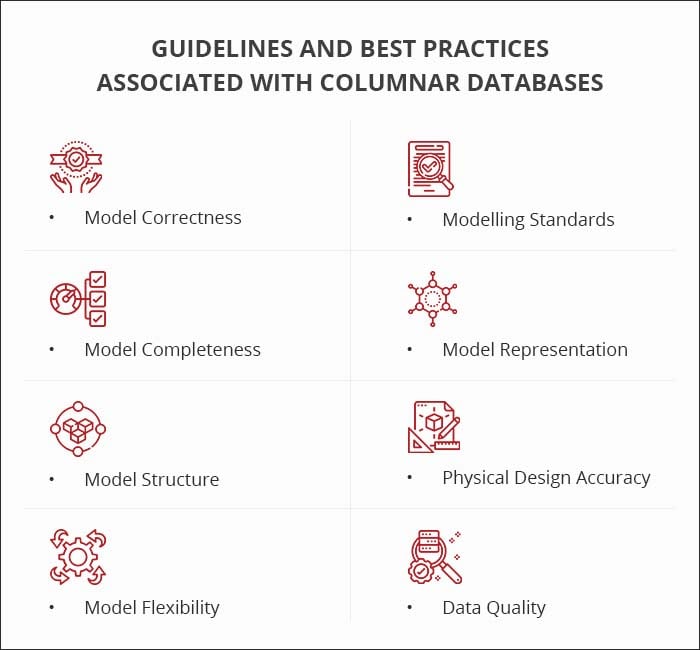Big Data and Analytics | 31 Dec 2021 | 8 min
A Comprehensive List of Best Practices for Data Modelling

Data plays a crucial role in decision-making processes in a business. Similar to how an architect studies a blueprint before making pivotal decisions, businesses must look at data to make meaningful, data-driven decisions. This makes data one of the most valuable assets for any establishment and data analytics an important practice.
However, before you move on to understanding the data and drawing insights from it, you must adequately document the data and communicate it with relevant stakeholders who can then take it ahead from there.
So, for enterprises to verify the fact that their data is being fully utilized to improve business decisions, they must check the accuracy, extensibility, coverage, as well as interpretability of that data.
Data modelling is a tool that helps you create a visual description of your business, and in turn, helps you analyse and explain data requirements of your business. With it, you can maintain clean, good quality data that your business can trust to make powerful data-driven decisions.
Ideally, you want to curate a data model that:
• Is comprehensible by data analysts as well as data scientists which will prevent them from making mistakes while writing queries
• Works hand-in-hand with the BI tool that you’re using
• Minimizes time-to-build
• Lowers response time to both the BI tool as well as ad-hoc queries
• Reduces costs associated with data management
To accelerate your acquaintance with data modelling, I have curated a list of best practices that will help you adopt it in an effective manner.
Now, you may be aware that data can be categorized as structured, semi-structured, or unstructured, and each of these types require a different approach to storing and modelling mechanisms. In my blog today, I will outline the guidelines and best practices associated with Columnar databases and how they can be used for different types of data.

You can use these best practices to properly define data layers to make data-driven decisions for your business and avail a plethora of advantages such as:
Proper data storage and modelling can be a game changer for your business, especially if you’re dealing with voluminous data that piles up rapidly. With this comprehensive list of best practices, I hope you can begin your journey towards effective data management and avail the benefits that come with it.
Reach out to us at Nitor Infotech to learn more about our Big Data engineering services and take a look at our whitepaper that chalks out some more guidelines and best practices for Columnar and NoSQL databases.

we'll keep you in the loop with everything that's trending in the tech world.
